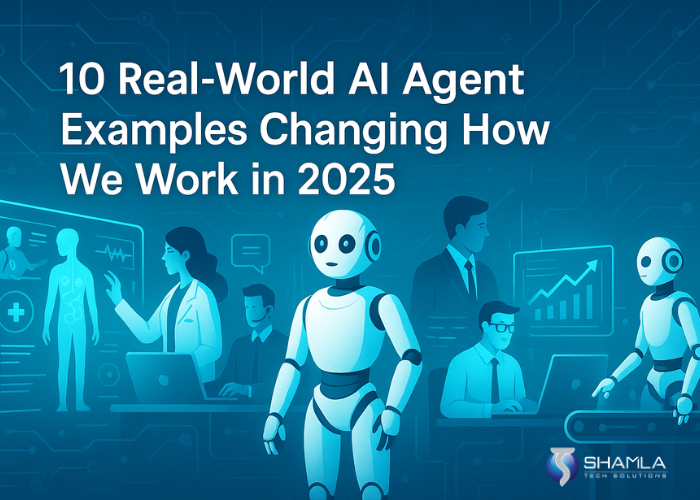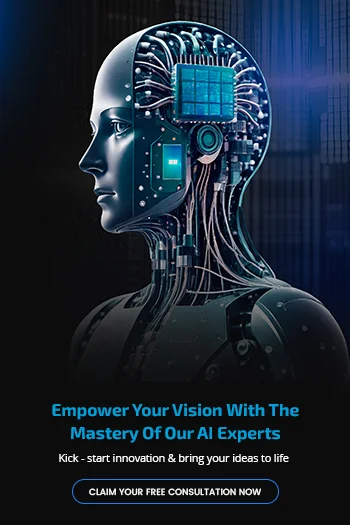10 Real-World AI Agent Examples
AI Agent Example 1: Virtual Customer Assistant
Key Functions of This AI Agent Example:
– Handles common questions with basic programmed replies.
– Cuts down on customer waiting time efficiently.
– Learns from earlier chats to offer better answers.
– Shifts complex problems to human agents as needed.
– Works 24 hours using a straightforward setup.
– Follows simple guidelines to deliver clear responses.
– Enhances overall customer trust and satisfaction.
AI Agent Example 2: Automated Scheduling Agent
Key Functions of This AI Agent Example:
– Searches calendars to spot available meeting times.
– Sends automated meeting invitations and reminders.
– Adjusts quickly to schedule changes without fuss.
– Integrates with standard calendar software smoothly.
– Offers clear instructions for rescheduling if necessary.
– Reduces email clutter and manual follow-ups.
– Improves team coordination and overall productivity.
AI Agent Example 3: Intelligent Data Analyzer
Key Functions of This AI Agent Example:
– Gathers data from multiple work sources quickly.
– Sorts and filters information using basic rules.
– Identifies trends without needing advanced math.
– Presents reports in clear and simple language.
– Reduces errors found in manual data handling.
– Saves time on lengthy data reviews.
– Supports better decision-making with clean insights.
AI Agent Example 4: Smart Email Sorter
Key Functions of This AI Agent Example:
– Scans incoming emails for key words and priorities.
– Automatically places emails into clear folders.
– Flags urgent messages for quicker review.
– Learns from your habits to improve sorting rules.
– Minimizes time wasted on low-priority emails.
– Provides an easy-to-understand layout for the inbox.
– Enhances work focus by reducing email clutter.
AI Agent Example 5: Dynamic Content Curator
Key Functions of This AI Agent Example:
– Collects content from trusted online sources.
– Filters out irrelevant items with basic rules.
– Organizes content into clear categories.
– Updates libraries automatically on a set schedule.
– Shows popular trends based on user interest.
– Provides clear summaries for each content piece.
AI Agent Example 6: Remote IT Support Agent
Key Functions of This AI Agent Example:
– Diagnoses common computer issues with basic tests.
– Provides step-by-step guides for simple fixes.
– Reduces the need for in-person technician visits.
– Checks system status using clear, programmed rules.
– Updates users on system maintenance easily.
– Improves overall work efficiency with simple IT care.
AI Agent Example 7: Project Management Helper
Key Functions of This AI Agent Example:
– Monitors task deadlines and project milestones.
– Sends clear reminders for upcoming tasks.
– Updates progress automatically with simple checks.
– Integrates with regular project planning software.
– Simplifies progress tracking with basic notifications.
– Helps in prioritizing work through clear lists.
– Reduces manual errors in project management.
AI Agent Example 8: Personal Finance Advisor
Key Functions of This AI Agent Example:
– Reviews monthly incomes and expenses with ease.
– Offers clear advice for better money management.
– Tracks savings goals using simple calculations.
– Alerts users when spending exceeds set limits.
– Summarizes financial data in plain language.
– Helps set realistic and clear financial plans.
– Provides timely tips for better budgeting.
AI Agent Example 9: Virtual HR Recruiter
Key Functions of This AI Agent Example:
– Filters resumes based on simple matching criteria.
– Highlights candidates with key required skills.
– Organizes applications in clear, sorted lists.
– Reduces time spent on initial screening.
– Provides basic summaries of candidate profiles.
– Integrates with standard HR software easily.
– Helps match job openings with strong candidates.
AI Agent Example 10: Supply Chain Coordinator
Key Functions of This AI Agent Example:
– Monitors inventory levels with simple data checks.
– Alerts managers when stocks need replenishing.
– Organizes delivery schedules with clear timelines.
– Reduces delays through basic, timely notifications.
– Collects data from various supply points easily.
– Provides clear status reports in plain language.
– Optimizes resource flow to keep operations steady.



